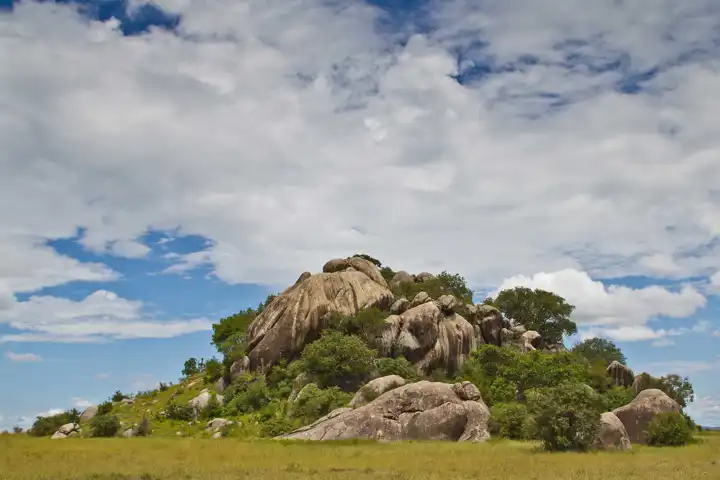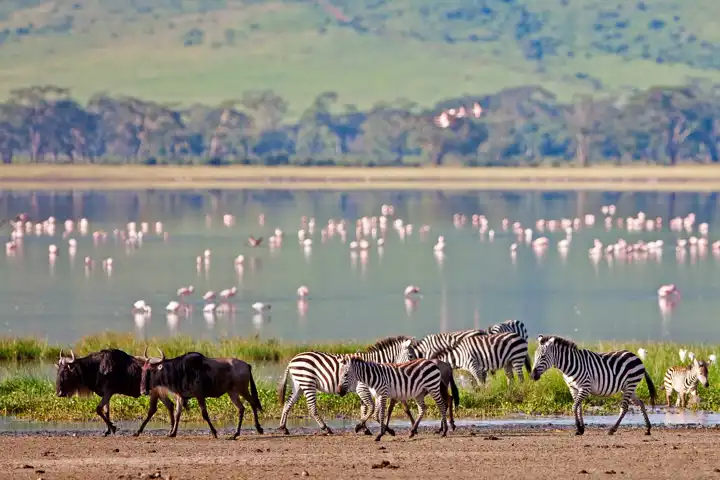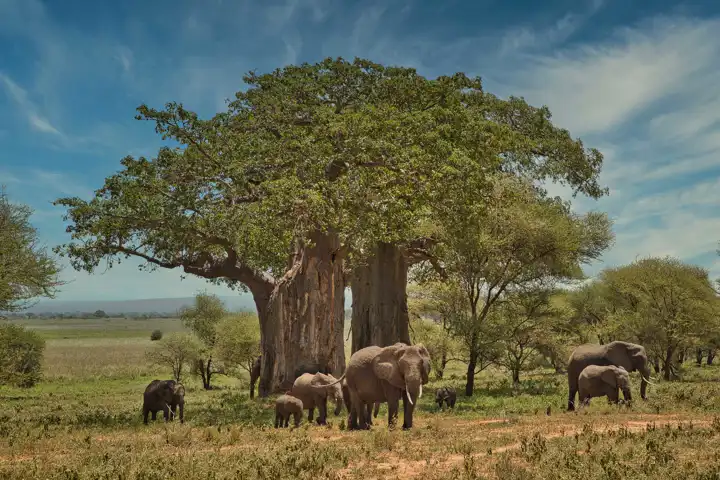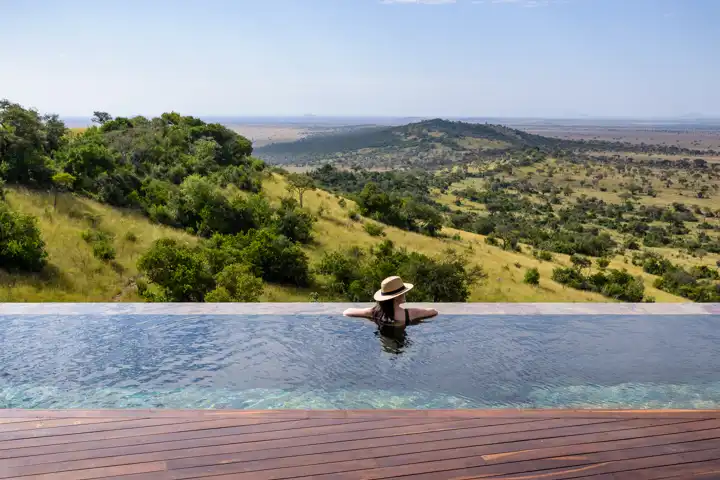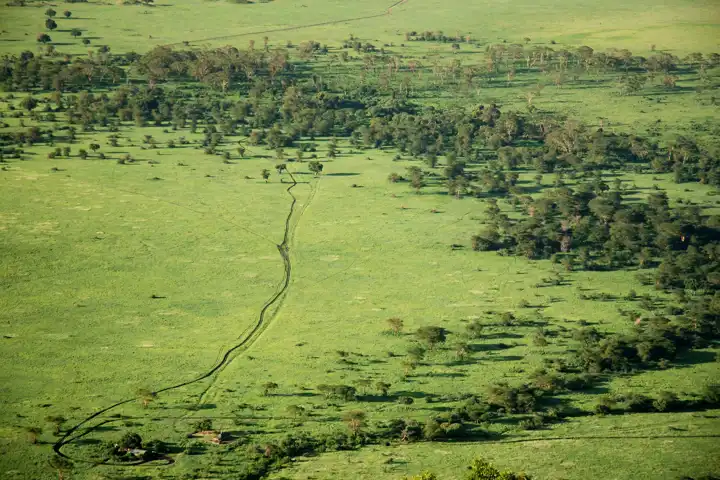Beyond the Serengeti
Exploring Tanzania's Diverse Safari Destinations
Tanzania’s Serengeti National Park is the country’s most popular destination for a safari. But there’s so much more to Tanzania than the Serengeti. In this guide, explore some of the lesser-known safari regions in Tanzania.
Arusha
Arusha is a customary starting point for many luxury Tanzania safaris. It is also the gateway to Mount Kilimanjaro—Africa’s mystifying mountain—and often the first acclimatizing pit stop for Kili climbers. Before a safari in Tanzania, Ker & Downey prefers travelers to spend at least their first day in Arusha recovering from the long flight and relaxing amid the formidable Arushian scenery. The area is most famous for its robust coffee plantations where roasters and fermentation facilities provide guests with a sneak peek into the blending and roasting process of their coveted beans.
Arusha is also home to Arusha National Park, one of Tanzania’s smallest yet most beautiful and topographically diverse parks in the north with a promise of buffalo, blue monkeys, flamingo, giraffe, and zebra sightings. While elephants and lions are uncommon, leopards and spotted hyena are often seen skirting the montane forest in the early mornings. The stunningly conical Mount Meru and its accompanying swamp-filled crater dominate the panoramic landscape, where canoeing on Lake Duluti, visiting local villages, private guided safaris, and mountain biking through the rolling Arushian hills are all up for grabs.
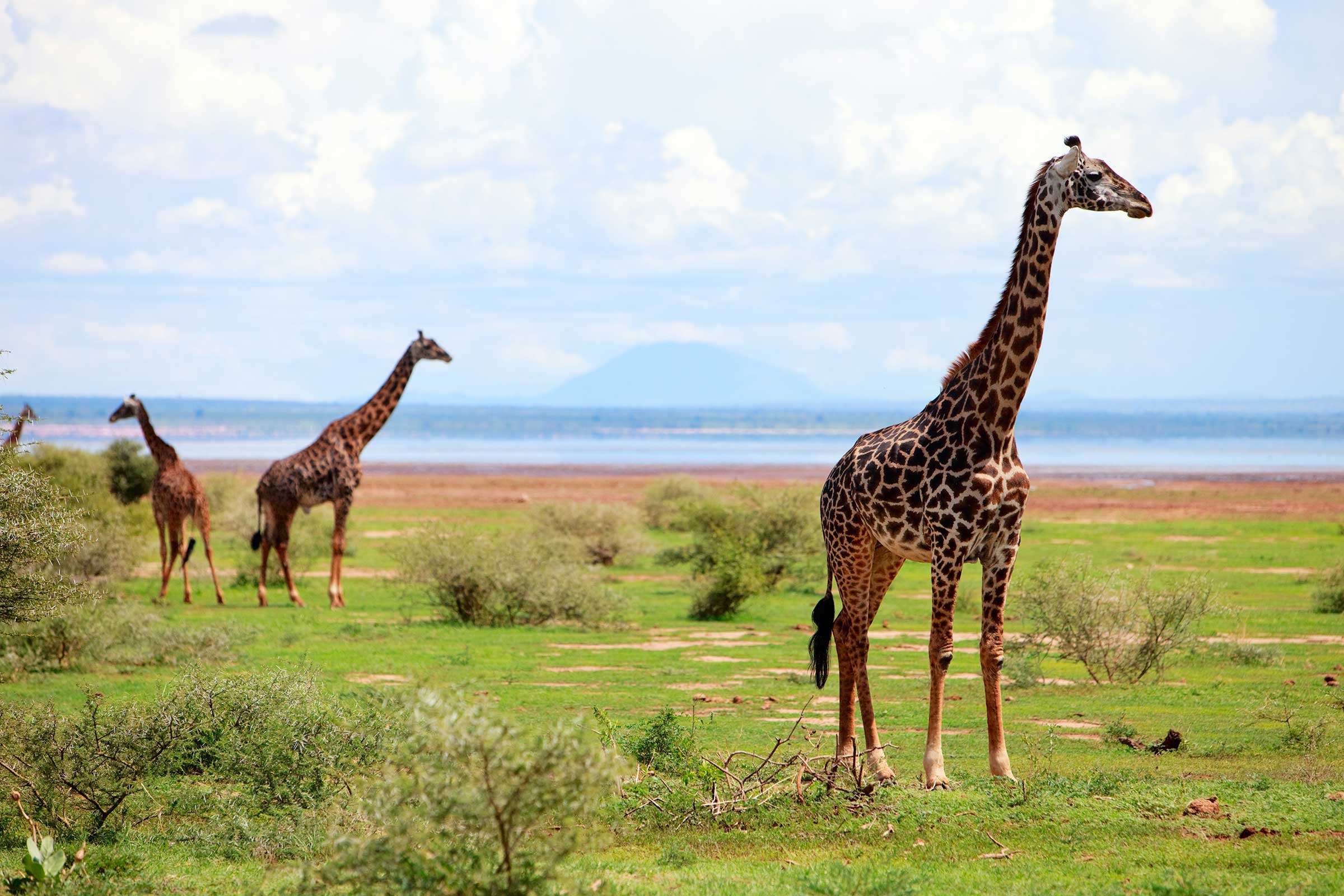
Katavi National Park
Katavi National Park is undoubtedly Tanzania’s best-kept secret. Situated along the rift escarpment in Tanzania’s furthest western reaches, Katavi National Park in Tanzania encompasses two contiguous game reserves. As a result it creates the country’s third largest national park. Despite its size and atmosphere, the park receives very few visitors. But the reward of getting here is ten-fold. The lodges within Katavi are just as luxurious as anywhere else in the country. The safari experiences are certainly wilder and more magical.
Katavi is one of the few places where both roan and sable antelopes can be spotted side by side. Katavi’s prevailing wildlife spectacle actually takes place in the Katuma River and its associated floodplains. During the rainy seasons, the lush, marshy Katavi and Chada Lakes transform into a haven for more than 400 water bird species. It is also a home for Tanzania’s densest concentrations of hippo and crocodile. Toward the end of the dry season, up to a thousand hippos will congregate in the muddy pools. This leads to bloody territorial fights between its heated males.
It is during the dry season, however, that Katavi truly comes to life. As the floodwaters retreat, massive wildlife populations flock to its trickling life support. The game concentrations during this time are believed to peak higher than those of Ngorongoro, featuring an estimated 4,000 elephants and several herds of 1,000-plus buffalo—some of the largest remaining buffalo herds in all of Africa. Meanwhile, the abundance of giraffe, zebra, impala, and reedbuck provide easy pickings for the numerous lion prides and spotted hyena clans whose territories collide on the plains, the vultures, fish eagles, and vervet monkeys looking on at the inevitable daily duel from the trees above.
Lake Manyara National Park
A setting once described by Ernest Hemingway as “the loveliest I had seen in Africa,” Lake Manyara is a true wonder of Tanzania. Its shallow blue waters, lined with pink-hued flamingos and more than 400 species of birds, give life to the surrounding area and attract wildlife and travelers alike to its peaceful seclusion.
Surrounding Lake Manyara is the smaller, more exclusive Lake Manyara National Park, which stretches for 31 miles along the base of the towering golden ridges of the Rift Valley escarpment. The compact game viewing here is a veritable microcosm of the Tanzanian safari experience, with expert guides who are not only lovers of the park’s ecosystem but are also passionate birders. With their guidance, you will be introduced to Manyara’s legendary tree-climbing lions and vast elephant herds, as well as the largest concentration of baboons anywhere in the world, who make their home in the lush groundwater forests alongside Skyes monkey and short-eared bushbabies.
Mahale Mountains National Park
There are few places left on earth that might rightfully be called Eden, and Mahale Mountains National Park in western Tanzania is one of them. The park is named for the beautiful Mahale Mountains towering over the clear, blue waters and white sand beaches of the peripheral Lake Tanganyika, and it is home to some of Africa’s most captivating wildlife populations.
Within the forested western slopes of Mahale Mountains National Park resides the park’s central feature: the world’s largest known population of chimpanzees. Approximately 1,000 individuals split between 14 groups inhabit the park alongside leopards, blue duikers, red-tailed monkeys, red colobus, and many Rift Valley bird species. A highlight of any stay is hiking up into the mountains to track the chimp groups, sitting among them as they go about their daily lives, grooming and conversing with one another. Chimps are also known to wander through Mahale’s luxury camps, stealing glimpses of themselves in the mirrors on their way down to the lake.
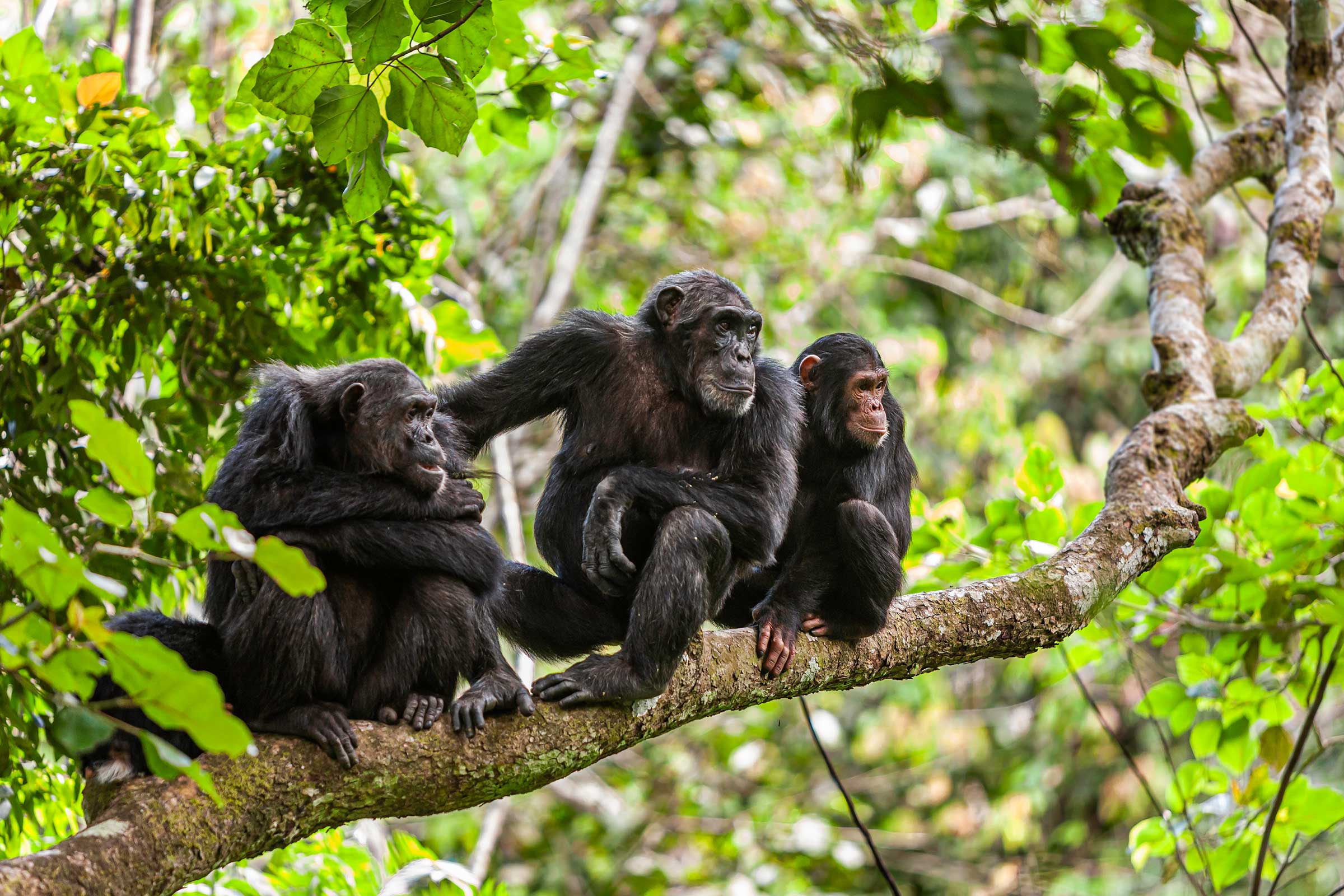
What makes Mahale Mountains National Park truly special is its unrivaled remoteness, which often leads to visitors having the entire lion, elephant, buffalo, and giraffe-filled park all to themselves. What’s more, Mahale Mountains National Park is also only explorable by foot. There are no roads or other human made infrastructure within the park’s borders, and the only way to enter is by boat through Lake Tanganyika. But don’t let the absence of roads fool you. Walking is not the only thing to do here. As the world’s longest and second largest freshwater lake, Lake Tanganyika is an ideal setting for all variations of adventure, from kayaking and canoeing to fishing and diving to discover the 13-million year old depths below.
In the middle of Tanganyika are multiple private islands, the most popular being the 130-acre Lupita Island. With white sandy shores and secluded beaches, these little slices of paradise turn the traditional notion of “beach vacation” on its head to include luxury island camps and the occasional hippo and otter sighting.

Ngorongoro Crater
The Ngorongoro Crater is world famous. At just 102 square miles, the world’s largest unfolded volcanic caldera is home to almost every individual species of wildlife in East Africa.Incredible wildlife sightings are virtually guaranteed here.
Explore the Ngorongoro CraterRuaha National Park
Tanzania’s largest national park, Ruaha serves as the country’s central wild and extended ecosystem covering an expanse of almost 28,000-square miles over the middle of the country. The park earned its name from the Great Ruaha River, a massive watercourse flowing through its heart to the southeast, giving way to an unhindered topography of undulating plateaus, sand rivers, rocky outcrops, and baobab groves.
Ruaha National Park is considered one of Tanzania’s few untouched frontiers for its spectacular concentration of wildlife. It is most famous for being home to Tanzania’s largest elephant population—currently estimated to be 12,000 strong—and is also a great place for birding and bird photography. More than 400 aviary species have been identified of an estimated 475 total, among them hornbills, kingfishers, sunbirds, and many migrant birds like the white stork.
The bursting banks of the Great Ruaha River are a playground for large herds of buffaloes, Grant’s gazelles, wild dogs, ostriches, cheetahs, and roan and sable antelopes, and it is not uncommon to witness lions hunting their prey or groups of giraffes and elephants passing by in troves. Despite the park’s immense size, there are still very few Tanzania luxury safari lodges within its boundaries, thus giving visitors the feeling of having all of Ruaha National Park to themselves.
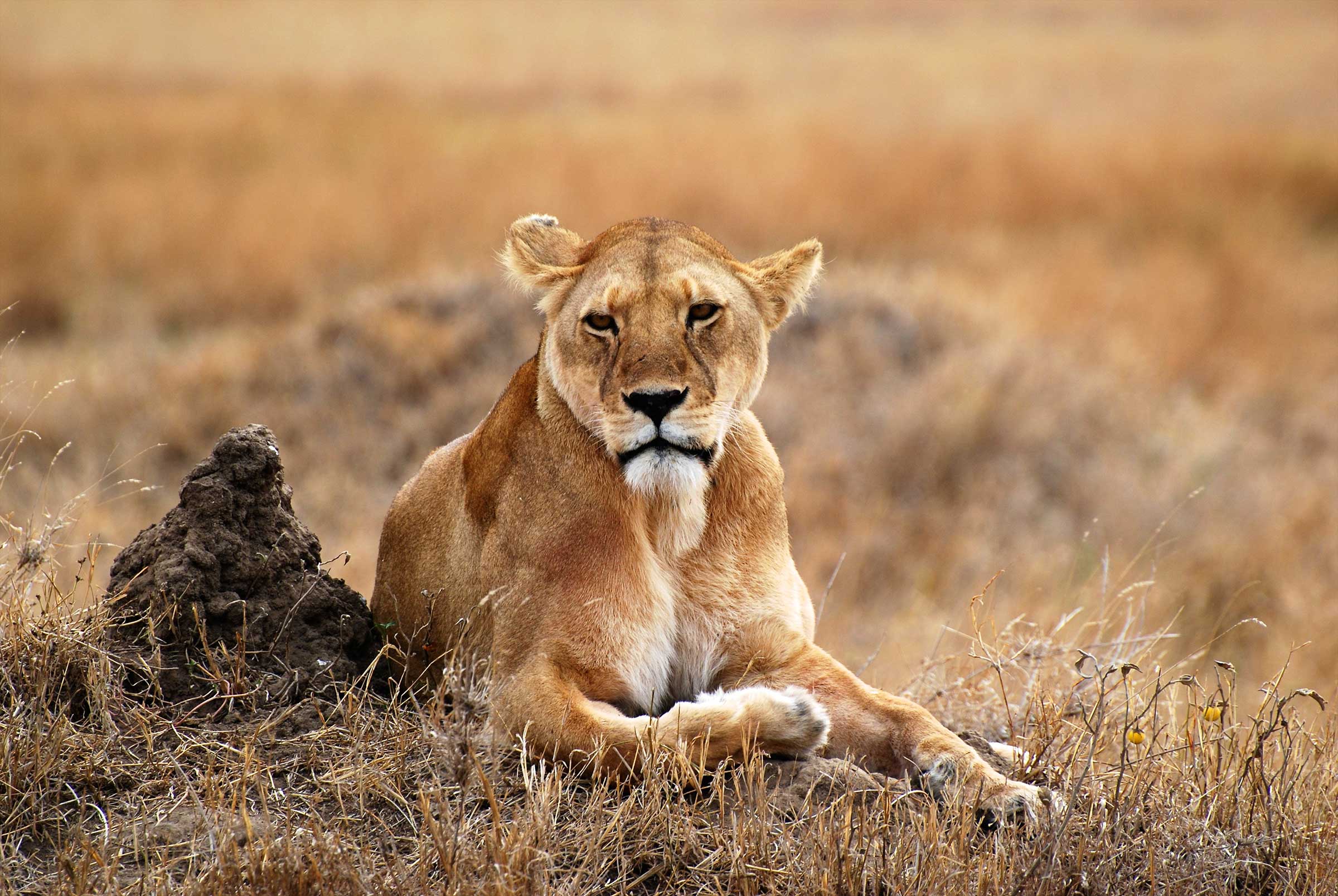
Selous Game Reserve
Selous Game Reserve in Tanzania is Africa’s largest protected reserve and Tanzania’ most extensive protected area. This vast 30,000-square mile region of wild and rugged terrain is larger than the entire country of Switzerland and stretches across more than five-percent of Tanzania’s southern heartland.
Selous Game Reserve is a world-renowned UNESCO World Heritage Site noted for its variety of wildlife safari activities set in the unspoiled bush. The entire region is an unusual combination of steep wooded hills, open miombo woodlands, grassy savannah plains, and marshes interlaced with an extensive webbing of lakes, lagoons, and channels fed by the mighty Rufiji River. Even volcanic hot springs dot the area, offering a diversity of natural landscape for prides of lion, herds of Tanzanian elephants, packs of wild dogs, and some of the country’s last remaining black rhinos to wander.
Traveling to Selous Game Reserve in Tanzania with Ker & Downey means it is unlikely you will see another game drive vehicle during your stay. Luxury lodges and tented camp coupled with private plane transfers ensure a truly untouched and wild African experience. Game drives, walking safaris, boat safaris, fly camping, and incredible fishing opportunities exist here—more activities than any other Tanzanian safari park—and they often result in the cries of the fish eagle, crocodile and hippo sightings in the river, and animal tracks dotting past your front door.
A Tanzania Safari with Ker & Downey
Each journey to Tanzania is custom created. There are no set departures or itineraries. Rather, the itineraries found on our website are meant to serve as inspiration. When you are ready to start planning your luxury safari to Tanzania, contact a travel Designer.
See What We Are Up To
Subscribe to our Weekly Newsletter for Travel Tips and Insider Guides for Planning your Next Journey!

